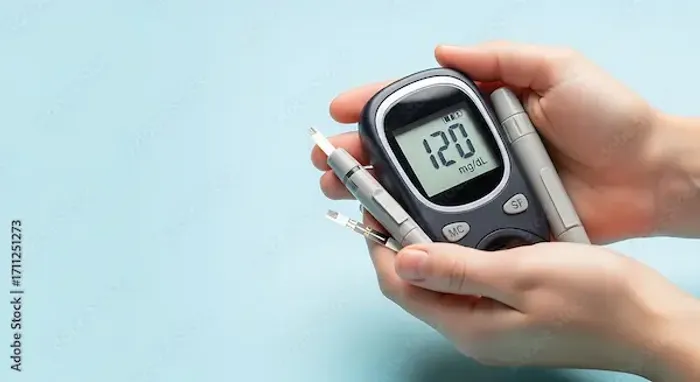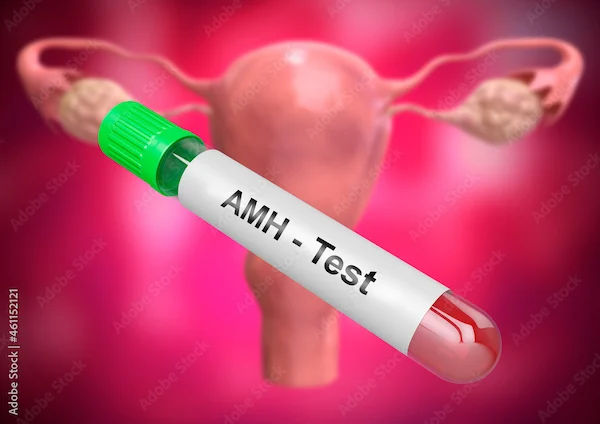Guide to Normal Blood Sugar Levels
Understand normal blood sugar levels and how they change through the day. Learn about fasting, post-meal, and A1C readings, plus how lifestyle affects results. Includes clear guidance for pregnancy, children, older adults, and when to seek medical help.

Written by Dr. Mohammed Kamran
Reviewed by Dr. Rohinipriyanka Pondugula MBBS
Last updated on 28th Oct, 2025

Introduction
Whether you’re newly curious about your health, managing prediabetes, or supporting someone with diabetes, understanding normal blood sugar levels is one of the most practical steps you can take. Blood glucose changes constantly—before breakfast, after meals, during exercise, and while you sleep. Knowing what counts as “normal,” what’s borderline, and what indicates a problem helps you act confidently rather than worry.
This guide cuts through confusion and outlines evidence-backed ranges for fasting, random, and post-meal readings, along with how A1C fits into the picture. It also explains how testing works at home and in the lab, why readings vary, and how food, movement, sleep, stress, and medications influence your levels. You’ll find specific guidance for pregnancy, children, and older adults, plus clear steps for what to do if numbers run too low or too high.
Where appropriate, we refer to authoritative medical sources and provide practical examples you can use immediately to keep your blood sugar in a healthy range. Let’s make normal blood sugar levels understandable—and achievable—for everyday life.
Consult a Top Endocrinologist for Personalised Advice
Why Blood Sugar Levels Matter
Maintaining normal glucose levels supports energy, focus, and long-term health.
Healthy glucose control fuels the brain and muscles, helping to prevent both short-term symptoms and long-term
complications. Glucose is the body’s preferred fuel, and insulin helps move it from the bloodstream into cells. When
levels fall too low (hypoglycaemia), you may feel shaky, sweaty, anxious, hungry, or confused. When they remain high
for too long (hyperglycaemia), symptoms such as thirst, frequent urination, fatigue, and blurred vision may appear.
Persistent high levels over time can damage blood vessels and nerves, increasing the risk of heart disease, stroke, kidney
disease, vision loss, and neuropathy.
Two main reasons make “normal” worth knowing:
- Short-term safety: Recognise and treat lows quickly using the 15/15 rule, and understand when a high reading needs
action. - Long-term prevention: Keeping glucose within target ranges reduces the risk of complications; even small improvements in average glucose or A1C make a difference. For people with diabetes, “time in range” (TIR) on continuous glucose monitoring links directly to better outcomes.
What Is Normal? Standard Ranges You Can Trust
Normal blood sugar ranges depend on when and how you measure your levels.
Here are commonly accepted, evidence-based ranges for adults without diabetes (values in plasma glucose):
Fasting (no calories for 8+ hours):
- Normal: 70–99 mg/dL (3.9–5.5 mmol/L)
- Prediabetes: 100–125 mg/dL (5.6–6.9 mmol/L)
- Diabetes: 126 mg/dL (7.0 mmol/L) or higher on two separate tests
Two-hour post-meal or oral glucose tolerance test (OGTT):
- Normal: under 140 mg/dL (7.8 mmol/L)
- Prediabetes: 140–199 mg/dL (7.8–11.0 mmol/L)
- Diabetes: 200 mg/dL (11.1 mmol/L) or higher
A1C (average glucose over roughly 3 months):
- Normal: under 5.7%
- Prediabetes: 5.7–6.4%
- Diabetes: 6.5% or higher
Random glucose (any time of day):
- A reading of 200 mg/dL (11.1 mmol/L) or higher with symptoms warrants medical evaluation.
Quick conversion: mmol/L = mg/dL ÷ 18 (e.g., 90 mg/dL ≈ 5.0 mmol/L).
A single unusual result after a large meal or poor sleep does not confirm a condition. Patterns over time, confirmed by lab tests, are what count. If readings frequently fall into the prediabetes range, lifestyle changes can dramatically lower your risk of developing diabetes.
How Blood Sugar Is Measured: From Fingersticks to A1C and CGM
Knowing how each testing method works helps you interpret your results accurately.
Home Monitoring
Home glucometers are practical, affordable, and effective for spotting daily patterns. Most modern meters meet accuracy standards within about ±15% of a laboratory result. Always wash and dry your hands before testing and periodically compare your meter’s result with a lab test to understand its typical variance.
Laboratory and Advanced Tests
- Fasting plasma glucose (FPG): Taken after at least 8 hours without calories; used for screening and diagnosis.
- Oral glucose tolerance test (OGTT): Measures glucose two hours after a 75 g glucose drink; useful for detecting impaired tolerance.
- A1C test: Reflects average glucose over about three months; not affected by fasting.
- Continuous glucose monitoring (CGM): Uses a sensor to measure glucose every few minutes. For many people with diabetes, the goal is to stay at least 70% of the time within 70–180 mg/dL.
Practical tip: Apollo 24|7 offers home collection for fasting glucose and A1C tests, convenient if you’re tracking
improvements or confirming prediabetes results.
Special Situations and Life Stages
Different stages of life bring unique blood sugar considerations.
Pregnancy (Gestational Diabetes)
During pregnancy, tighter glucose targets protect both parent and baby. Typical goals are:
- Fasting below 95 mg/dL (5.3 mmol/L)
- 1-hour post-meal below 140 mg/dL (7.8 mmol/L)
- 2-hour post-meal below 120 mg/dL (6.7 mmol/L)
Screening usually occurs between 24–28 weeks of pregnancy using a glucose challenge test and, if required, an OGTT. Nutrition, monitoring, and sometimes medication help manage these levels, with post-delivery testing ensuring a return to normal.
Children and Teenagers
Children without diabetes have similar normal ranges, though those with diabetes often have targets tailored to age and
hypoglycaemia risk. Paediatric teams focus on preventing lows while supporting growth, balanced nutrition, and
activity.
Older Adults
For older adults, glucose targets balance benefit and safety. If someone has other health conditions or a history of severe
lows, clinicians may set higher A1C goals to reduce risk. Personal health, independence, and overall wellbeing shape
the right target.
Interpreting Your Numbers in Real Life
Blood sugar levels change constantly; understanding patterns gives better control.
Glucose can rise or fall with factors beyond diet.
- Morning highs (dawn phenomenon): Early-morning hormones can raise fasting levels; gentle activity or adjusting
evening carbohydrates can help. - Food timing and composition: Meals rich in quick-digesting carbs can cause spikes. Adding fibre, protein, or healthy fats slows absorption and flattens peaks.
- Exercise: Regular moderate activity increases insulin sensitivity, while intense exercise may briefly raise glucose due to adrenaline.
- Illness and medications: Infections, steroids, or other drugs can raise glucose; alcohol or certain antibiotics can cause lows.
- Trends vs one-offs: A single high after a special meal matters less than recurring highs on typical days. Keep notes on meals, sleep, and stress to spot patterns.
Keeping Levels in the Healthy Range: What Actually Works
Evidence-based strategies can help stabilise glucose and prevent progression to diabetes.
- Maintain a healthy weight and stay active: Losing 5–7% of body weight and achieving at least 150 minutes of weekly
moderate exercise can greatly lower diabetes risk. Even without weight loss, breaking up long sitting periods improves
insulin response. - Build balanced meals: Base your diet on non-starchy vegetables, lean protein, legumes, and whole grains. Eating vegetables and protein before starches can lessen glucose spikes.
- Choose smart carbohydrates: Favour whole fruits over juices and intact grains over refined options. Track how your body responds to specific foods.
- Prioritise sleep and stress management: Poor sleep or high stress can elevate fasting and post-meal glucose. Regular routines, relaxation, and short walks help.
- Stay hydrated: Adequate water supports stable glucose. A 10-minute walk after your largest meal can also reduce post-meal rises.
If numbers remain high despite these steps, seek professional guidance. Apollo 24|7 can connect you online with a clinician or dietitian and arrange home testing for A1C or fasting glucose to fine-tune your plan.
When Blood Sugar Goes Too Low or Too High
Knowing how to respond quickly prevents complications and restores balance.
Low Blood Sugar (Hypoglycaemia)
Typical symptoms include shakiness, sweating, hunger, headache, irritability, or confusion. If blood glucose is below 70
mg/dL (3.9 mmol/L), use the 15/15 rule: eat 15 grams of fast-acting carbohydrate (such as fruit juice or glucose
tablets), wait 15 minutes, and recheck. Repeat if still low. If episodes are frequent or unexplained, consult a doctor
through Apollo 24|7 for evaluation.
High Blood Sugar (Hyperglycaemia)
Symptoms may include thirst, frequent urination, fatigue, or blurred vision. Recheck to confirm. Stay hydrated, move gently if safe, and review recent meals and medicines. Persistent readings above 300 mg/dL with nausea, vomiting, or abdominal pain require urgent medical care.
Managing During Illness
Illness often raises glucose even when appetite is reduced. Keep hydrated, monitor levels more often, and follow your
doctor’s medication plan. Having a “sick-day” checklist prepared in advance is helpful.
When to Speak with a Doctor (and What to Ask)
Professional assessment ensures you’re acting on reliable data.
Screening is advised for adults aged 35 or older, or anyone with risk factors such as excess weight, family history of
diabetes, high blood pressure, or polycystic ovary syndrome (PCOS).
If fasting readings are often 100–125 mg/dL or post-meal readings exceed 140 mg/dL, schedule a lab test to confirm
your status.
Questions to Ask Your Clinician
- Which test (FPG, A1C, or OGTT) suits me best?
- How often should I recheck if I’m in the prediabetes range?
- What target should I aim for based on my health?
- Which lifestyle changes will have the most impact?
Convenience tip: Apollo 24|7 offers home collection for fasting glucose and HbA1c tests, and online consultations for interpreting results. If numbers stay elevated, book an in-person visit for a full assessment.
Conclusion
Blood sugar naturally fluctuates, but the habits that keep it healthy are simple.
For most adults without diabetes, normal fasting levels fall between 70–99 mg/dL, two-hour post-meal readings stay
under 140 mg/dL, and A1C remains below 5.7%. These numbers, along with consistent monitoring, help you move from uncertainty to confident self-management.
Stable blood sugar comes from small, steady routines—balanced meals, daily movement, adequate sleep, and stress control. For those in the prediabetes range, these same habits can prevent progression. Pregnancy and older age may require individualised goals, while regular tests like A1C and CGM provide feedback on progress.
When readings don’t make sense, seek guidance instead of guessing. Apollo 24|7 can arrange home sample collection and connect you with clinicians online for tailored support. With informed decisions and consistent effort, maintaining normal blood sugar levels is both achievable and sustainable.
Consult a Top Endocrinologist for Personalised Advice
Consult a Top Endocrinologist for Personalised Advice

Dr. Anand Ravi
General Physician
2 Years • MBBS
Bengaluru
PRESTIGE SHANTHINIKETAN - SOCIETY CLINIC, Bengaluru

Dr. E Prabhakar Sastry
General Physician/ Internal Medicine Specialist
40 Years • MD(Internal Medicine)
Manikonda Jagir
Apollo Clinic, Manikonda, Manikonda Jagir
(150+ Patients)

Dr. Arunava Ghosh
General Physician/ Internal Medicine Specialist
10 Years • MBBS,MD(GENL.MED.),DM(ENDOCRINOLOGY)
Kolkata
VDC Clinic, Kolkata

Dr. Shruthi B
Endocrinologist
20 Years • MBBS,MD ( GEN MED) DM (ENDOCRIONOLOGY)
Bengaluru
Apollo Clinic, JP nagar, Bengaluru
Aditya Singh
Endocrinologist
8 Years • MBBS
Bengaluru
Apollo One Electronic City, Bengaluru
Consult a Top Endocrinologist for Personalised Advice

Dr. Anand Ravi
General Physician
2 Years • MBBS
Bengaluru
PRESTIGE SHANTHINIKETAN - SOCIETY CLINIC, Bengaluru

Dr. E Prabhakar Sastry
General Physician/ Internal Medicine Specialist
40 Years • MD(Internal Medicine)
Manikonda Jagir
Apollo Clinic, Manikonda, Manikonda Jagir
(150+ Patients)

Dr. Arunava Ghosh
General Physician/ Internal Medicine Specialist
10 Years • MBBS,MD(GENL.MED.),DM(ENDOCRINOLOGY)
Kolkata
VDC Clinic, Kolkata

Dr. Shruthi B
Endocrinologist
20 Years • MBBS,MD ( GEN MED) DM (ENDOCRIONOLOGY)
Bengaluru
Apollo Clinic, JP nagar, Bengaluru
Aditya Singh
Endocrinologist
8 Years • MBBS
Bengaluru
Apollo One Electronic City, Bengaluru
More articles from Sugar Level
Frequently Asked Questions
1) What is a normal fasting blood sugar range for adults?
70–99 mg/dL (3.9–5.5 mmol/L). Readings of 100–125 mg/dL suggest prediabetes; 126 mg/dL or higher on two separate tests indicates diabetes.
2) What should my blood sugar be two hours after eating?
For most adults without diabetes, under 140 mg/dL (7.8 mmol/L). If your readings often exceed this, speak to your doctor about further testing.
3) What is a normal A1C level?
Under 5.7% is considered normal; 5.7–6.4% indicates prediabetes; 6.5% or higher suggests diabetes. A conversion chart can help translate A1C to estimated average glucose.
4) How can I lower high blood sugar quickly and safely at home?
Drink water, take a gentle 10–15-minute walk, and review your meals. If levels stay high or you have concerning symptoms, seek medical advice through Apollo 24|7.
5) Are normal blood sugar levels different during pregnancy?
Yes. Typical targets are fasting under 95 mg/dL, one-hour post-meal under 140 mg/dL, and two-hour post-meal under 120 mg/dL. Work with your obstetric or diabetes care team for personalised goals.



